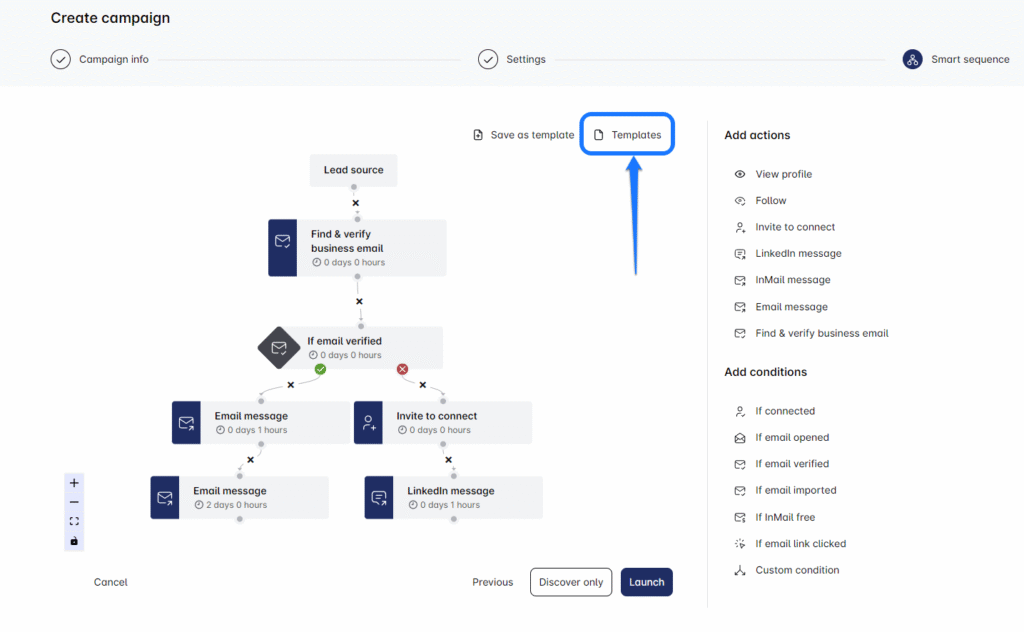How to Build a High-Quality B2B Prospecting List? You can have the best cold outreach message, a perfectly optimized sequence, and impeccable timing. But if your prospecting list is poorly targeted, none of that will work.
Think of your prospecting list as the foundation of your outbound sales efforts. If it’s well-built, your campaigns will run smoothly. If it’s shaky, you’ll constantly be wondering why no one is responding.
Whether you’re an independent sales rep, a marketing manager, or a small business owner, this guide will walk you step by step through how to build a high-performing B2B prospecting list. You’ll learn both the strategy and the essential tools to prospect more effectively and close more deals.
By the end of this article, you’ll know what makes a great list, how to build one from scratch, or how to improve the one you already have.
What is a Prospecting List?
A prospecting list is a structured database of contacts that your company identifies as potentially interested in your offers. It usually includes data such as: name, job title, company, work email, phone number, location, industry, company size, etc.
This list is the basis for your targeted outreach campaigns—whether via email, LinkedIn, or phone—with the goal of turning these contacts into qualified leads, then customers.
Lead vs. Prospect: What’s the Difference?
A lead is an unqualified contact: someone who has shown interest at some point (by subscribing to a newsletter, downloading a white paper, etc.).
A prospect, on the other hand, is a qualified lead. They match your Ideal Customer Profile (ICP) and are more likely to buy.
- Lead list: Raw, unqualified contacts
- Prospecting list: Targeted contacts matching your ICP
- Source (lead): Forms, ads, events
- Source (prospect): Manual research, enrichment, CRM
- Lead: Top of funnel
- Prospect: Middle/bottom of funnel
- Lead: Used for nurturing
- Prospect: Used for direct contact
Why Build a Prospecting List?
- 🎯 You contact the right profiles from the start, drastically improving conversion rates.
- ✉️ Your message can be personalized thanks to better segmentation.
- 💰 Your tools (CRM, sequences) are more effective with clean data.
- ⏱️ Your team stops wasting time on irrelevant leads.
- 📈 Helps refine your ICP through campaign insights.
The Key Elements of an Effective Prospecting List
- Personal details
- First and last name
- Job title
- Work email
- Phone (optional)
- LinkedIn URL
- Company website
- Company info
- Company name
- Industry
- Size (headcount)
- Revenue (or estimate)
- Location
- Buying signals
- Recent fundraising
- Job postings
- New strategic hires
- New tools adopted
- Contact preferences
- Preferred channel: email, LinkedIn, phone
- Time zone
- Language
Steps to Build a B2B Prospecting List
- Know your offer
Understand the pain points you solve and your true value. - Define your ICP
Focus on companies that convert best: size, industry, revenue, tools. - Create buyer personas
Understand your decision-makers’ roles, priorities, objections. - Identify target companies
Use tools like Sales Navigator, Crunchbase, Clutch.
- Find the right people
Filter by job title, department, and seniority. - Verify contact details
Use Dropcontact, Hunter, NeverBounce, etc.
Once your search is ready, simply copy the URL and paste it into Leadin to instantly launch a campaign with those prospects:
Bonus: Scoring Your Prospects
Not all prospects are equally likely to convert. Scoring helps prioritize.
- +10 pts: ICP match
- +10 pts: Target title found
- +8 pts: Recent fundraising
- -10 pts: Generic email (e.g. Gmail)
GDPR Compliance & Data Hygiene
- Use only work emails
- Always offer an unsubscribe option
- Be transparent: who you are, why you’re contacting them
- Use secure, compliant tools
- Clean your list quarterly
Should You Build or Buy Your List?
Building your list takes time but ensures quality, compliance, and better long-term ROI. Ideal for niche targeting and personalization.
Buying lists can be useful to quickly test a market. But beware of outdated or low-quality data.
Tip: If you buy, go through a trusted provider and verify everything.
File Templates to Build Your List
- First name / Last name
- Job title
- Work email
- LinkedIn profile
- Company name
- Size, industry, website
- Pain points, personalized messaging
You can import this into your CRM or automation tool (like Leadin).
Conclusion: A Great List = More Meetings
Your success in prospecting depends on the quality of your targeting. A good list = more relevant messages, higher reply rates, and a full calendar.
At Leadin, we help you save time:
- All-in-one software to launch your multichannel campaigns (LinkedIn + Email)
- Done-for-you prospecting services to outsource research and copywriting
👉 Explore the Leadin smart sequences and templates to get started!


